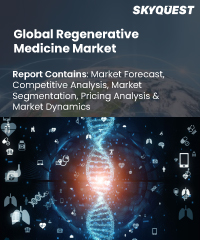
Product ID: SQMIG35I2129

Report ID:
SQMIG35I2129 |
Region:
Global |
Published Date: February, 2024
Pages:
157
|
Tables:
92 |
Figures:
76
North America dominated the global market in 2021, accounting for more than 45% of the total revenue. This is due to the presence of a large number of major players in the United States. The presence of research institutions interested in the development of innovative treatments, as well as the availability of advanced technologies, contributes to a large number of clinical trials in the region. Financial availability, as well as many initiatives by government and private organizations, contributes to the largest revenue stream from the United States. For example, the US The Department of Health and Human Services 2020 A New Vision, campaign places regenerative medicine at the forefront of healthcare.
Asia Pacific is expected to witness the fastest CAGR during the forecast period due to the creation of infrastructure and facilities to accelerate stem cell research in the growing economies of the region. In April 2013, the Japanese Ministry of Health, Labor, and Welfare enacted the Regenerative Medicine Act, which accelerated the clinical development of regenerative and cell-based medicine. Similarly, the Chinese government has allowed various human embryonic stem cell research operations, encouraging researchers to investigate the clinical potential of these cells.
Our industry expert will work with you to provide you with customized data in a short amount of time.
REQUEST FREE CUSTOMIZATIONRegenerative Medicine Market size was valued at USD 9.59 billion in 2019 and is poised to grow from USD 12.2 billion in 2023 to USD 83.6 billion by 2031, growing at a CAGR of 27.2% in the forecast period (2024-2031).
Want to customize this report? This report can be personalized according to your needs. Our analysts and industry experts will work directly with you to understand your requirements and provide you with customized data in a short amount of time. We offer $1000 worth of FREE customization at the time of purchase.

Product ID: SQMIG35I2129